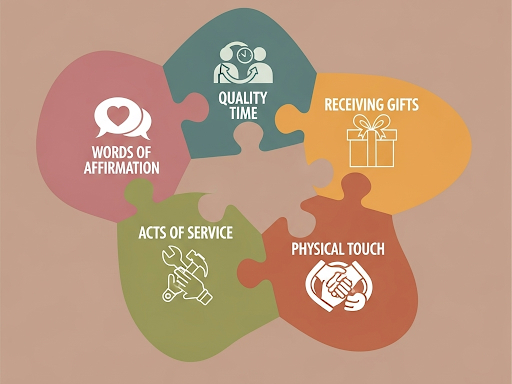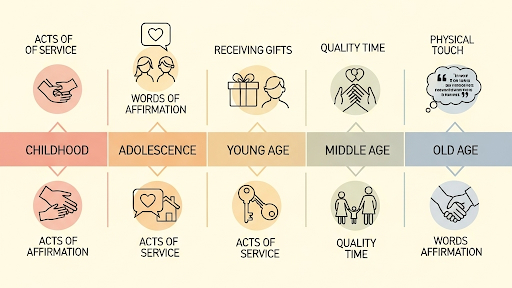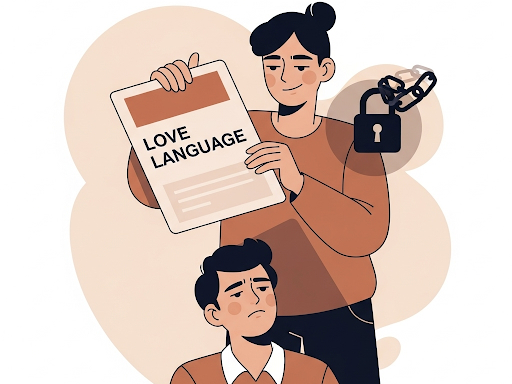Scientific Criticisms of the 5 Love Languages Theory (in 2025)

Scientific Criticisms of the 5 Love Languages Theory
The concept of the “5 Love Languages” has become a cultural phenomenon. Millions have taken the quiz, countless couples have tried to apply it, and it’s often recommended by relationship coaches and therapists. But despite its popularity, the framework is far from universally accepted.
Many psychologists and researchers have raised concerns about the lack of scientific evidence, potential oversimplification, and risks of misuse. If you’ve ever wondered, “Is this really backed by science?” — you’re not alone.
This article explores the main scientific criticisms of the 5 Love Languages theory, what research actually says, and why it’s important to understand both the strengths and limitations of this model.
The Origins: A Quick Recap
The 5 Love Languages framework was introduced by Dr. Gary Chapman in his 1992 book The Five Love Languages. His idea: everyone has a primary way of giving and receiving love — Words of Affirmation, Acts of Service, Receiving Gifts, Quality Time, or Physical Touch.
The appeal is clear. It’s simple, relatable, and easy to apply. But that simplicity is exactly what many researchers criticize.
Criticism #1: Lack of Empirical Evidence

One of the biggest concerns is the lack of rigorous scientific studies supporting Chapman’s framework. While millions of people resonate with the concept, anecdotal experience isn’t the same as controlled research.
- A review in Psychology Today noted that the love languages model “rests on anecdotal observation, not peer-reviewed evidence” (source).
- Studies that have attempted to validate the framework often find inconsistent results — people don’t always fit neatly into one category.
Internal link opportunity: At the end of this section, link to your post Do Love Languages Change Over Time? to show readers how preferences evolve instead of staying fixed.
Criticism #2: Oversimplification of Relationships

Love is complex. Reducing it to five categories risks flattening the reality of human connection.
- Many people identify with multiple love languages, not just one.
- Others argue that emotional needs can’t be boiled down to simple categories at all.
Psychologists point out that focusing only on love languages may cause couples to miss the deeper issues at play, like conflict styles, attachment patterns, or unresolved trauma (Virginia Tech News).
Criticism #3: The “Quick Fix” Fallacy

Another concern: the love languages framework can be mistaken as a one-step solution for all relationship problems.
- Some couples assume: If I just learn my partner’s language, everything will improve.
- But relationship science shows that long-term health depends on trust, conflict resolution, communication, and emotional safety, not just one framework.
As one therapist put it, “Love languages are a tool, not a cure” (MindBodyGreen).
Criticism #4: Static vs. Evolving Needs

Chapman’s original model often gives the impression that love languages are fixed traits. But in reality, needs evolve.
- A parent of newborns may crave Acts of Service more than ever.
- Someone recovering from stress or trauma might shift toward Quality Time or Physical Touch.
Psychologists argue that presenting love languages as static can cause frustration — couples expect one “forever answer” when in fact, love languages often shift with life stages (Marriage.com).
Criticism #5: Risk of Misuse in Unhealthy Relationships

Perhaps the most serious concern is how love languages can be misused in toxic or abusive dynamics.
- Some individuals use love languages to manipulate — e.g., demanding sex because “my love language is physical touch.”
- Others guilt partners into service: “If you really loved me, you’d do this for me.”
- This can create transactional or controlling patterns.
Articles on this risk emphasize that love languages should never override respect, boundaries, or safety (WOMANKIND).
Criticism #6: Ignoring Cultural Contexts
The 5 Love Languages were developed in a specific cultural setting — largely Western, Christian, and heteronormative. Critics note that:
- In some cultures, physical affection may not be public or emphasized.
- In others, service to family or group harmony may take priority over individual affirmation.
This raises the question: are “love languages” universal, or just one lens among many?
(YouGov survey results show huge variation in which languages people value most across regions and cultures.)
What Research Does Support
Despite criticism, some studies suggest the framework can improve relationships — if used responsibly.
- Couples who intentionally practice each other’s love languages often report feeling closer.
- The model’s simplicity makes it easy to start conversations that might otherwise be difficult.
In other words: love languages can be a useful entry point, but they shouldn’t replace deeper relationship work.
FAQs About Love Languages and Science
Are love languages scientifically proven?
No, not in the strict sense. While many people resonate with them, the model lacks strong empirical research.
Should couples still use love languages?
Yes — as long as they treat them as tools, not absolute rules. They work best when paired with communication and flexibility.
What’s a good alternative framework?
Attachment theory and research from institutions like the Gottman Institute offer evidence-based tools for building strong relationships.
Final Thoughts
The 5 Love Languages theory is simple, popular, and often helpful — but it isn’t a scientifically proven cure-all. Critics raise valid concerns about oversimplification, cultural bias, and the risk of misuse.
Instead of treating love languages as the only answer, use them as a conversation starter. Pair them with deeper relationship tools like emotional intelligence, conflict resolution, and boundary-setting.
By approaching love languages with nuance, you can enjoy their benefits while avoiding the pitfalls.


Leave a Reply